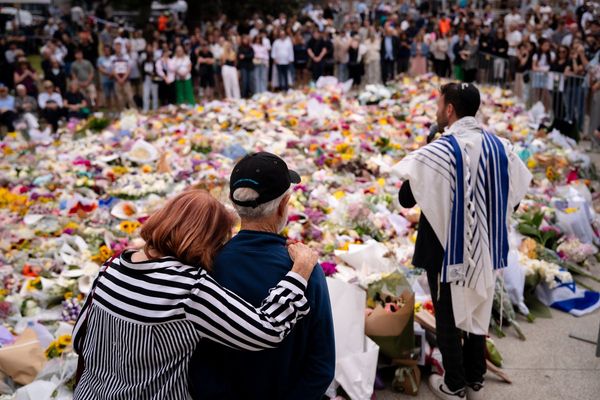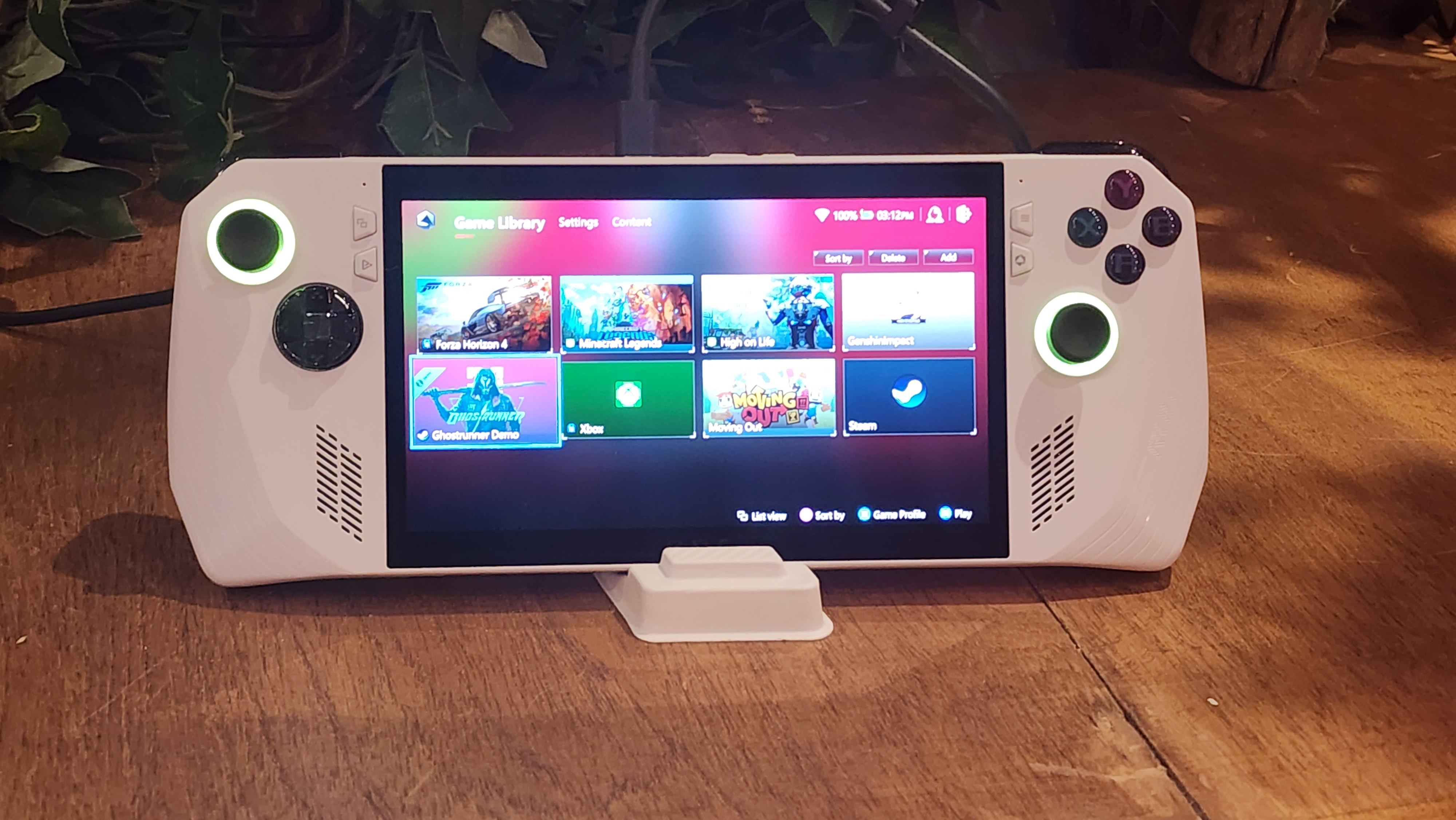
After a confusing April Fools' Day announcement, Asus is making it 100% clear. The Asus ROG Ally gaming handheld is real, it's coming soon, and it comes in configurations with two different custom AMD processors.
Those two processors are the AMD Ryzen Z1 and Ryzen Z1 Extreme. Both use Zen 4 cores with RDNA graphics on a 4nm process. The regular Z1 is a 6-core, 12-thread CPU and has four RDNA 3 compute units for graphics, while the Z1 Extreme bumps that to eight cores and 16 threads with 12 RDNA 3 compute units. On the Steam Deck, Valve's Ryzen-based Aerith SoC has four cores, eight threads and eight RDNA 2 compute units for graphics.

No matter which APU you go with, the Ally comes with 16GB of DDR5 RAM and a 512GB PCIe 4.0 SSD (to expand storage, you can also use the system's UHS-II micro SD card slow, with up to 312 MBps max speed). Those both match the top-end $649 Steam Deck, though the Steam Deck uses a slower UHS-I micro SD card slot. Connectivity includes Wi-Fi 6E and Bluetooth, but, like the Steam Deck, Asus is skipping out on 5G and 4G LTE.

The display is a 7-inch, 1080p touchscreen with a 16:9 aspect ratio that runs up to 120 Hz using Gorilla Glass Victus. Asus claims a max of 500 nits brightness. The Steam Deck's screen is also 7-inches, but with a 16:10 aspect ratio, a lower 1280 x 800 resolution and a 60 Hz refresh rate.
Clearly, outside of the aspect ratio, Asus wins on paper here. But there's an open question as to how many games will take advantage of the 120 Hz refresh rate, and what that will do to battery life. When we reviewed the Steam Deck, Valve said its battery life estimate was for a 30 frames-per-second limit. Asus claims up to 8 hours of battery life, but we'll have to see what that's like when we get one in our hands.

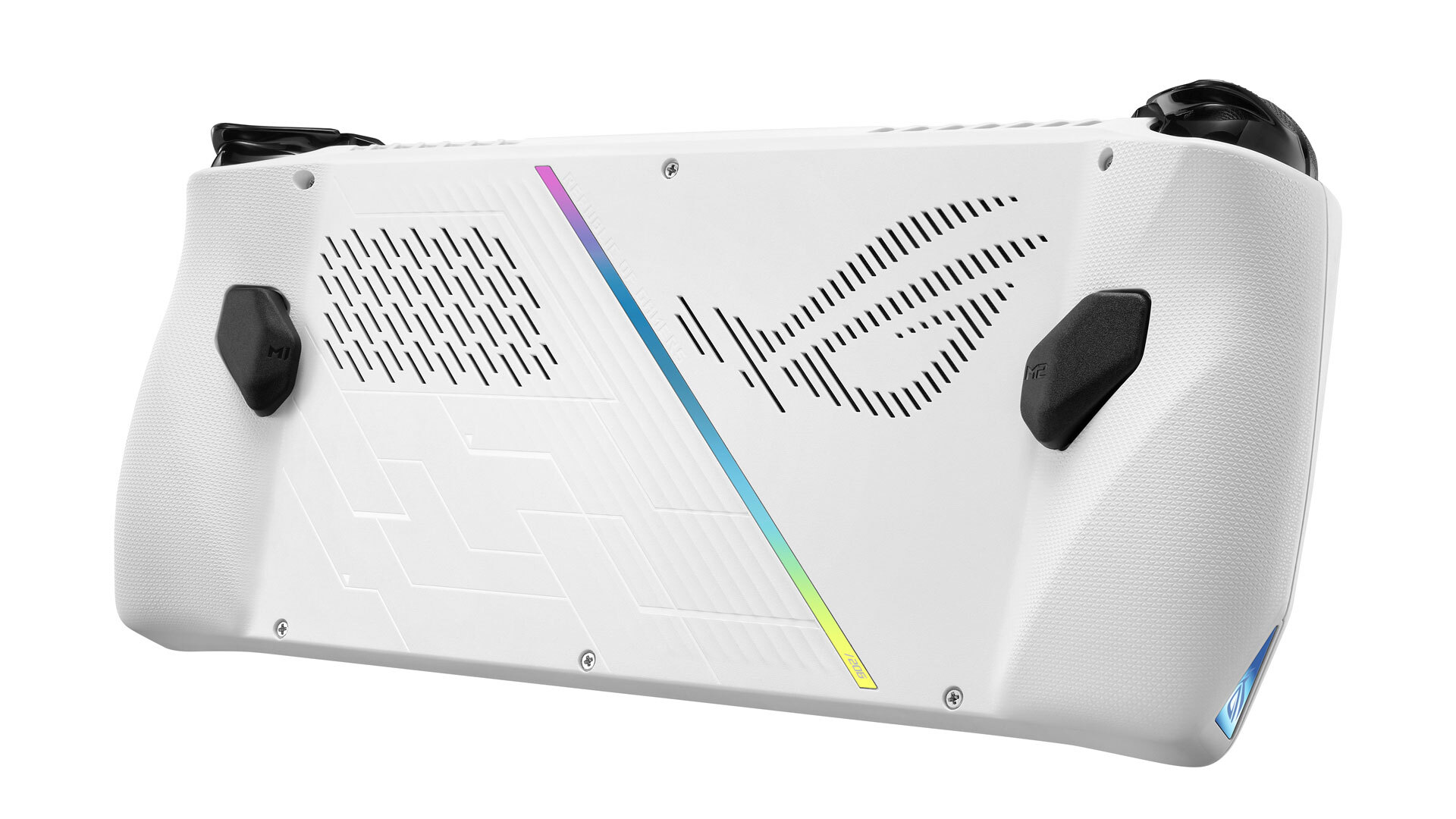
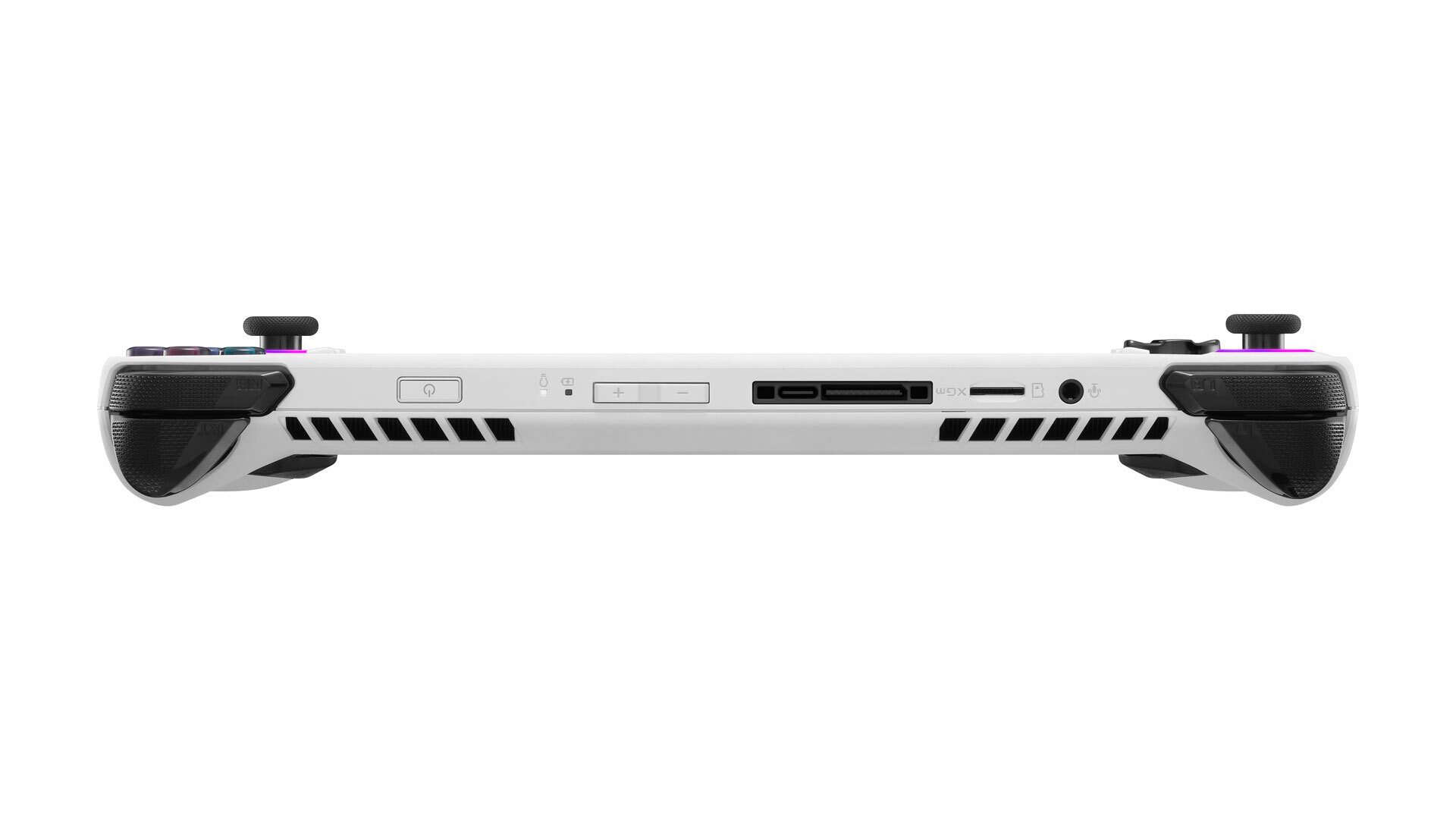
Asus is running Windows 11 on the ROG Ally. The benefit here is that basically everything runs on Windows, including Steam, Epic Games, Nvidia GeForce Now, Xbox Game Pass, and the wide variety of launchers from game publishers. SteamOS, which Valve uses on its handheld, only plays Steam Games, though you can install Windows there if you like.
But SteamOS works excellently with controllers, while Windows leaves a lot to be desired there. Asus will have its own Armoury Crate UI and overlay for making changes while in game, but we'll have to spend time with it to see if it's any good. This new version of Armoury Crate will also control haptic feedback, let you switch between handheld, keyboard, and desktop modes, and let you customize joystick dead zones.
The other benefit for using Windows may be with performance. There won't be any emulation, like with games using Proton on the Steam Deck.
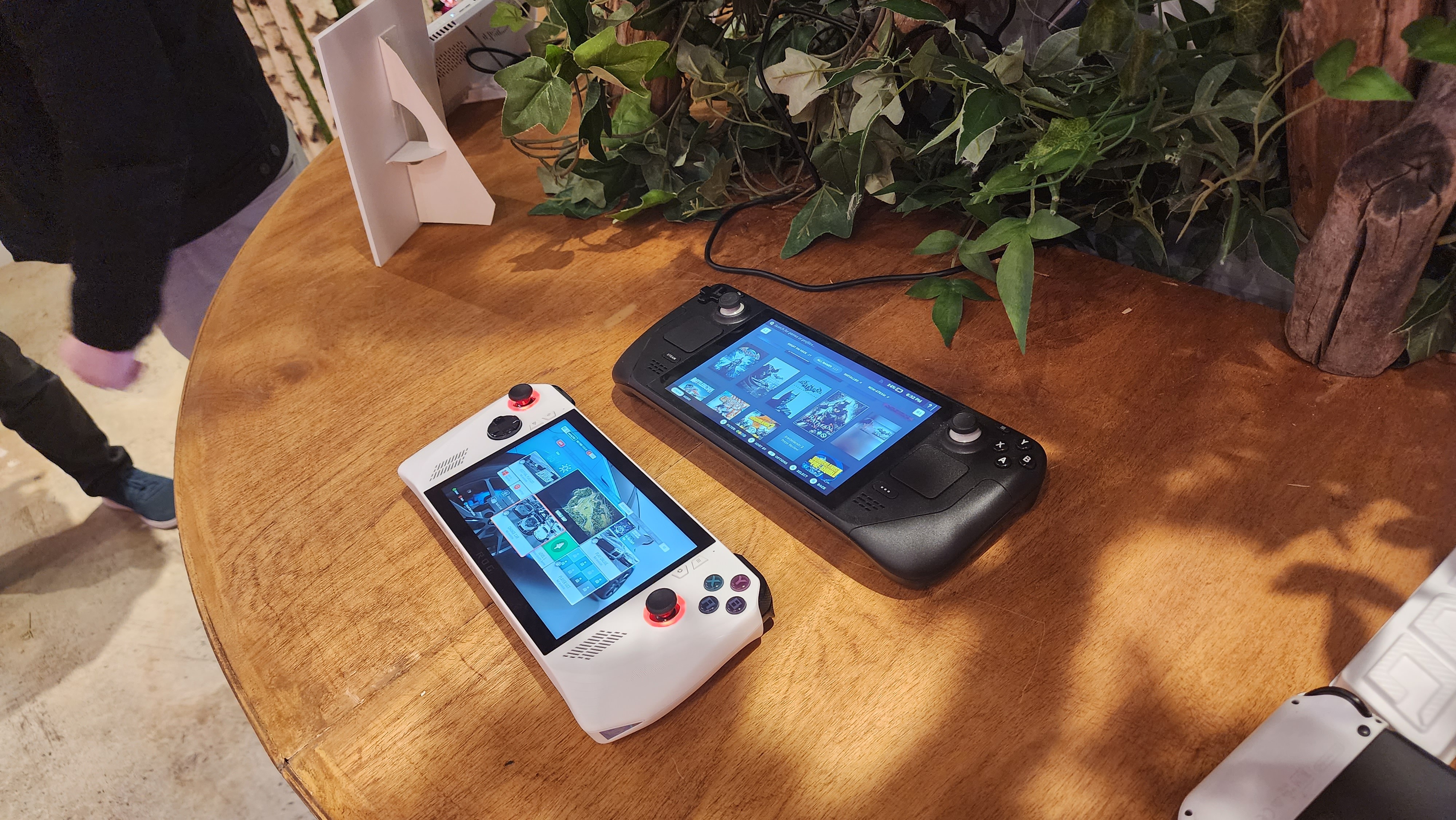
The company is touting a "zero-gravity thermal system" to keep the Ally cool, with heat pipes that work no matter how you hold the Ally. It likens it to the cooling systems it uses in the 2019 ROG Mothership (which was quite loud) and the Flow Z13 tablet. Asus claims that with a single fan running, it will reach 30 dB, while it's a quieter 20 dB with both fans.
At 608 grams (1.34 pounds), the Ally is lighter than the Steam Deck. Without the touchpads, it sheds a significant amount of its footprint, too. Asus has gone with an Xbox-style layout here, which makes sense considering that's what most PC games use. There are asymmetrical joysticks, a D-Pad and A, B, X, and Y buttons, bumpers and triggers. While the Steam Deck has four rear buttons, the ROG Ally only has two. Asus also includes a fingerprint reader in the power button for use with Windows Hello.

Some models will work with Asus' XG mobile graphics dock. Currently, that goes up to an RTX 4090 which costs a whopping $2,000. But if you do own one, it will allow for higher fidelity gaming when you plug the Ally into a monitor.
Maddeningly, Asus has yet to release the actual price. The most expensive Steam Deck is $649 with 512GB of storage, an anti-glare screen, while the cheapest is $339 with 64GB of eMMC storage (both include carrying cases). I don't expect to see Asus match the low-end Steam Deck; with these specs, it's clearly playing in the top-tier category. My gut feeling is that Asus won't be able to match Valve (which can subsidize hardware by taking a cut of games sales), but we'll find out whenever Asus decides it's ready to announce.
For now, those interested in pre-order information can sign up on Best Buy's website to learn more about the system when it's ready for sale. In its own release, AMD said the Ally will have more information about pricing and availability on May 11.


